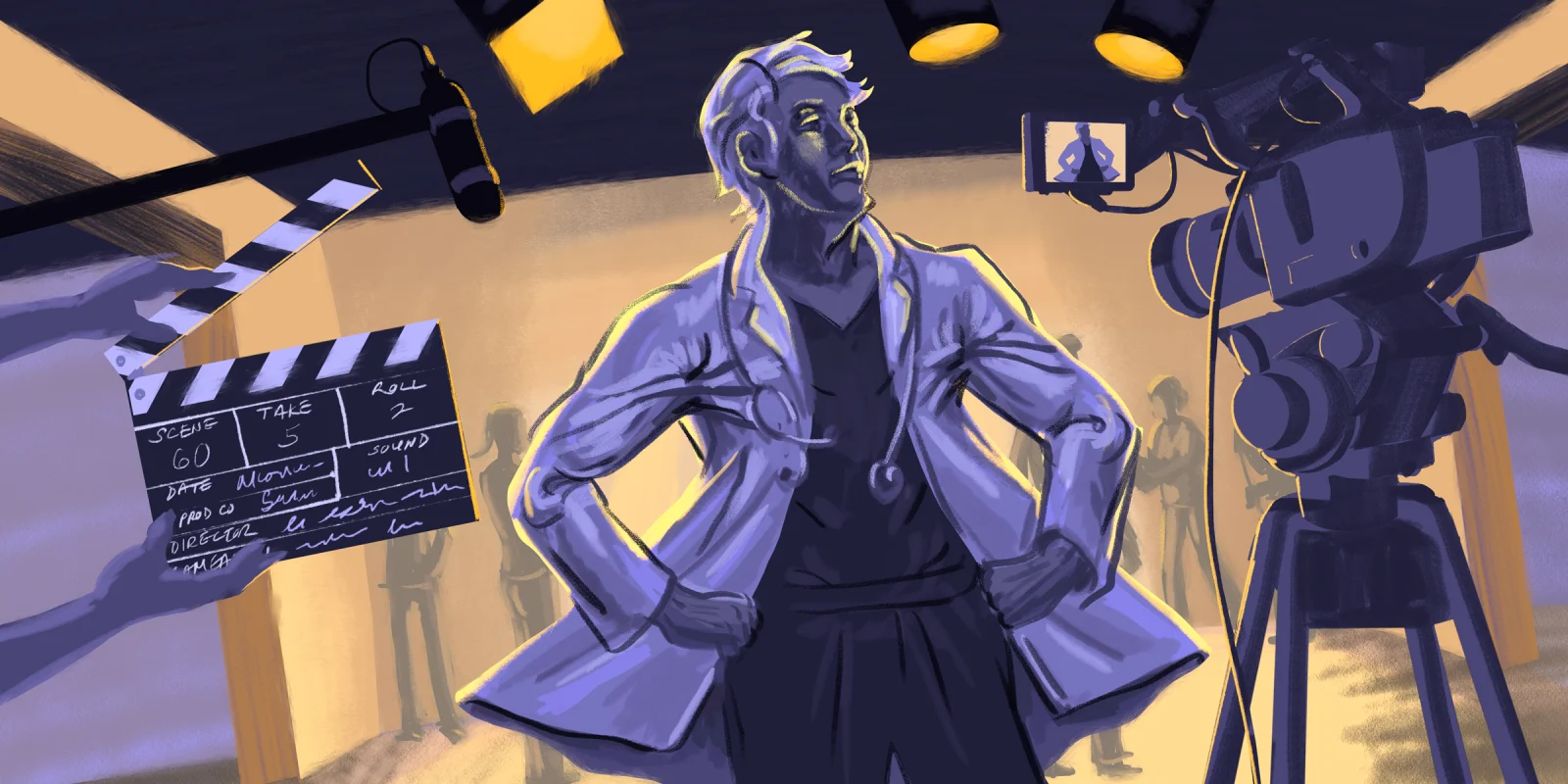Amid the beeping of the patient monitor, I turned to look at my brother. Puzzled, I asked him, “What’s her specialty?”
My brother shrugged helplessly, eyes glued to the scene in front of him. “I … don’t know.”
I turned back to watch the television screen. Dr. Lahela “Doogie” Kameāloha, the titular character, had done it again. After successfully performing an unsupervised emergency appendectomy on her crush, Walter Taumata, resident physician Dr. Kameāloha managed to snag his heart as well.
Premiering in 2021, “Doogie Kameāloha, M.D.” is a family medical dramedy based on the 90s sitcom “Doogie Howser, M.D.,” and follows 16-year-old Lahela as she navigates relationships, parties, and a struggle for independence during her first year of residency in Hawaii. Or perhaps it’s her second year. The show does its best to keep the specifics of Doogie’s medical education unclear. Like a Barbie doctor doll, it seems like she can do anything, from complicated surgeries to treating cancer. Indeed, Dr. Kameāloha is only another iteration of a long line of physician characters in Hollywood television.
Medical dramas have received immense popularity since their inception in the 1950s, with initial storylines usually following a heroic male physician who acts as a narrative lens for the audience to understand various medical conditions — such as addiction, STIs/STDs, and congenital malformations — and how they affect patients. With time, the plot structure of these shows evolved, expanding to include an ensemble cast and multiple intermingling stories that involve clinicians’ personal and professional lives. Philosopher Marshall McLuhan argued that the popularity of such television shows is the result of “an obsession with bodily welfare.” However, I believe that the public’s increasing fascination with medical dramas is not necessarily with the diagnoses themselves, but rather the depiction of physician identity and culture.
I grew up with the latter iteration of medical dramas. “ER”, “Grey’s Anatomy,” “House,” “New Amsterdam,” “The Good Doctor,” “Royal Pains” — many of the physicians in these shows put real-life physicians to shame. These television doctors, always handsome and beautiful, are superhuman; not only do they have a vast mental encyclopedia of knowledge, but they also go above and beyond for their patients while dealing with their own struggles or personal agendas. Dr. Gregory House always finds the final clue to determine a patient’s diagnosis, even while experiencing chronic pain and addiction. Dr. Meredith Grey tends to a colleague in the midst of a shooting and suffers a miscarriage. Dr. Max Goodwin initially refuses to undergo chemotherapy and radiation for his throat cancer in an effort to continue running the hospital for as long as possible. Dr. Doug Ross overcomes a past trauma of child abuse to become a pediatrician. The list goes on.
I wonder, though, is this superhuman quality something that should be championed in media? Medical professionals are already placed on a high moral pedestal, policed on their professionalism even outside working hours. While some argue that preserving an altruistic, self-sacrificial rhetoric in the field retains respect and protects clinicians from public disapproval, others state that indoctrination in such beliefs may play a part in physician burnout. Perhaps the COVID-19 pandemic highlighted this identity crisis the most, with pre-pandemic articles and comments longing for a return to this status as “hero,” while post-pandemic discourse staunchly rejects the term altogether.
What is interesting is that while television continues to perpetuate this idealistic narrative, many of the characters in these shows conclude their journeys by leaving the clinical setting. Both Dr. Devon Pravesh from “The Resident” and Dr. Meredith Grey from “Grey’s Anatomy” leave their attending positions to focus on research trials. Dr. Gregory House fakes his own death to spend time with his dying friend and avoid prison. Even the original Doogie leaves medicine in its entirety and chooses to travel across Europe instead. What does it mean when you have such dedicated, intelligent physician characters departing the hospital — the most well-known symbol of medical care?
Perhaps this is art imitating life. Many health care practitioners are choosing to leave medicine, in part due to a lack of hospital resources, burnout, and staff shortages. There is an obvious dissatisfaction in the health care system — a sentiment held by both patients and clinicians.
As for myself, I have never met a physician who self-identified as superhuman or whom I would personally call a “hero.” Rather, I see individuals, both young and old, tiredly rubbing their eyes as they stare at the EMR on a computer screen. Apathetic people who are thinking about their own bills, families, and health while also attempting to traverse a suboptimal health care system and determine an appropriate management plan for their patients. As a student physician, I become a listening ear to clinicians who are tired of remaining resilient, instead choosing to shorten their working hours, focus on a side hustle, or leave the clinical space altogether.
Dr. Lahela Kameāloha also chooses to leave the white, sterile walls of Oahu Health Medical Center. However, this Doogie does not leave medicine like her predecessor. Rather, frustrated by the administrative and financial barriers of the hospital that prevent her from helping disadvantaged communities most in need of care, Lahela ends up traveling Hawaii in a mobile clinic caravan. While she continues to represent the idealistic health care hero stereotype, Lahela does so on her own terms.
“I choose me,” she narrated, driving off to treat others during the show’s series finale (in a van eerily similar to a Barbie care clinic vehicle).
As a children’s show, “Doogie Kameāloha, M.D.” illustrates many inaccuracies and situations that make me want to bang my head in frustration. For example, Lahela falls in love with her cancer patient, there only seem to be three residents in the entire medical center, and no one seems to question whether the responsibility of medicine might be too heavy for a 16-year-old to bear. I mean, she should at least be speaking with a therapist, right? And yet, “Doogie Kameāloha, M.D.” also teaches the next generation that there are alternative ways to practice medicine while simultaneously practicing self-care.
Perhaps this time, life can learn to imitate art.
How do you believe clinicians should be characterized on shows? Share your thoughts below.
Soubhana Asif, MS is a medical anthropologist and fourth-year medical student at New York Institute of Technology College of Osteopathic Medicine (NYITCOM). Her interests include community psychiatry, cross-cultural practice, and racial justice. She is a 2023–2024 Doximity Op-Med Fellow.
Original Illustration by Jennifer Bogartz







